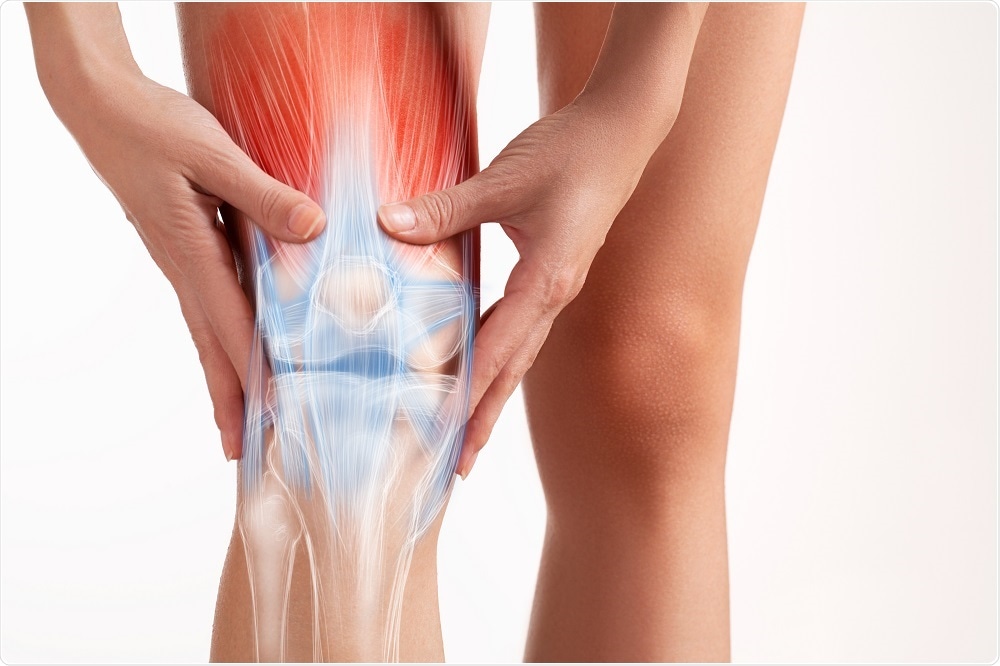A team of engineers, physicians and radiologists, led by The University of Cambridge, have developed an algorithm to monitor arthritis that could change the way that the severity of the disease is assessed and treated.
 Image Credit: Bluskystudio / Shutterstock
Image Credit: Bluskystudio / Shutterstock
The technique could enable a better understanding of how osteoarthritis develops and improve assessment of how effective new treatments are, without invasive tissue sampling being required.
Currently, osteoarthritis is detected by X-ray, which identifies the narrowing of space between joint bones that occurs when cartilage is lost. However, this technique is not sensitive enough to detect subtle changes that occur in the joint over time.
Lead author Dr Tom Turmezei says another limitation is that 2D X-rays rely on humans to interpret them: "Our ability to detect structural changes to identify disease early, monitor progression and predict treatment response is frustratingly limited by this."
As reported in the journal Scientific Reports, the technique Turmezei and colleagues have developed uses images from a standard computerised tomography (CT) scan to produce detailed, color-coded 3D images of the joint.
Referred to as joint space mapping (JSM), the algorithm highlights areas in the joint where the space between bones is wider or narrower.
Following tests performed on human hip joints from donated bodies, the team found that JSM outperformed X-ray imaging in terms of sensitivity and was at least twice as good at detecting the changes.
Using this technique, we'll hopefully be able to identify osteoarthritis earlier, and look at potential treatments before it becomes debilitating."
Dr Tom Turmezei
The researchers say the results suggest that 3D imaging could be more effective at diagnosing and monitoring arthritis than 2D imaging, although CT imaging of joints has not yet been approved for use in research trials.
We've shown that this technique could be a valuable tool for the analysis of arthritis, in both clinical and research settings. When combined with 3D statistical analysis, it could also be used to speed up the development of new treatments."
Dr Tom Turmezei, Lead Author